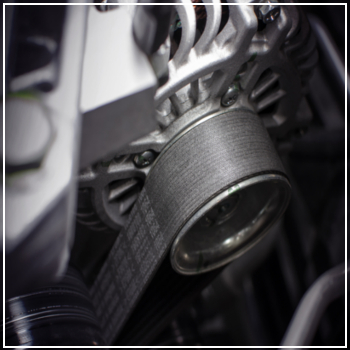What’s Wrong With the Timing Belt?
 When you bring your car in for a routine service and the mechanic tells you there’s an issue with the timing belt, it can be confusing. You might wonder—what exactly is a timing belt, and why does it matter? Let’s break it down.
When you bring your car in for a routine service and the mechanic tells you there’s an issue with the timing belt, it can be confusing. You might wonder—what exactly is a timing belt, and why does it matter? Let’s break it down.
What Is a Timing Belt?
The timing belt is one of the most critical parts of your engine. Its main job is to synchronize the rotation of the crankshaft and the camshaft, ensuring that the engine's valves open and close at the right time during each cylinder's intake, compression, power, and exhaust strokes. Without this synchronization, the engine could suffer severe internal damage.
Typically made from reinforced rubber or synthetic materials with teeth or ribbing, the timing belt is designed to last a long time. However, because it's located at the front of the engine and is constantly under stress, it will eventually wear out. Most manufacturers recommend replacing it between 60,000 and 100,000 miles, depending on the make and model of your vehicle.
Not all cars use a timing belt. Some have a timing chain instead, which is generally more durable and doesn’t require regular replacement. Timing chains are often found in larger engines, while timing belts are common in smaller, more compact engines.
Signs That Your Timing Belt May Be Failing
Before the problem becomes catastrophic, there are several signs that indicate your timing belt may be worn or damaged:
1. Engine Performance Issues
- Engine Misfires or Runs Rough: A loose or worn timing belt can cause the engine to lose synchronization, leading to reduced power or shaking while driving.
- Ticking Sounds: A loud ticking noise when the engine is running may signal a failing timing belt or low oil pressure.
- Engine Won’t Start: If the belt breaks completely, the engine may not start at all, or you may hear the starter turning without any response from the engine.
- Check Engine Light: The vehicle’s computer may detect irregularities in the engine’s performance, which could be linked to a faulty timing belt.
2. Oil Problems
- Oil Pressure Drops: A damaged timing belt can cause misalignment of the camshaft, leading to oil leaks or poor oil circulation.
- Oil Leaks: If the timing belt cover or related components become loose, oil can leak, causing the belt to degrade faster over time.
3. Water Pump Failure
If your water pump seizes, it can put extra strain on the timing belt, potentially causing it to snap. This is why it’s important to maintain the entire cooling system as part of regular maintenance.
4. Visible Damage
If you're comfortable checking under the hood, look for signs like:
- Cracks or tears in the belt
- Missing or worn-down teeth
- Oil stains or buildup
- Worn edges or fraying
These issues can be caused by improper installation, excessive heat, or incorrect tension. Ignoring them can lead to a complete failure of the timing belt, which can result in expensive engine repairs.
If you notice any of these symptoms, don’t wait—get your timing belt checked by a professional as soon as possible. At our Naugatuck location, we offer expert diagnostics and repairs to keep your vehicle running smoothly. Call us today to schedule an appointment and avoid costly breakdowns down the road.
we are OEM tubing pipeline factory ,we could produing what you need ,for car use ,waiting for your request in anytime.
We Can provide customers with customized services
Polyamide brake tube,PA corrugated tube, Automobile wire tube
JiLin TAIYU Technology Manufacturing Co., LTD , http://www.automobilepipe.com